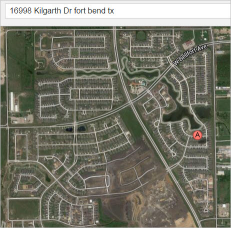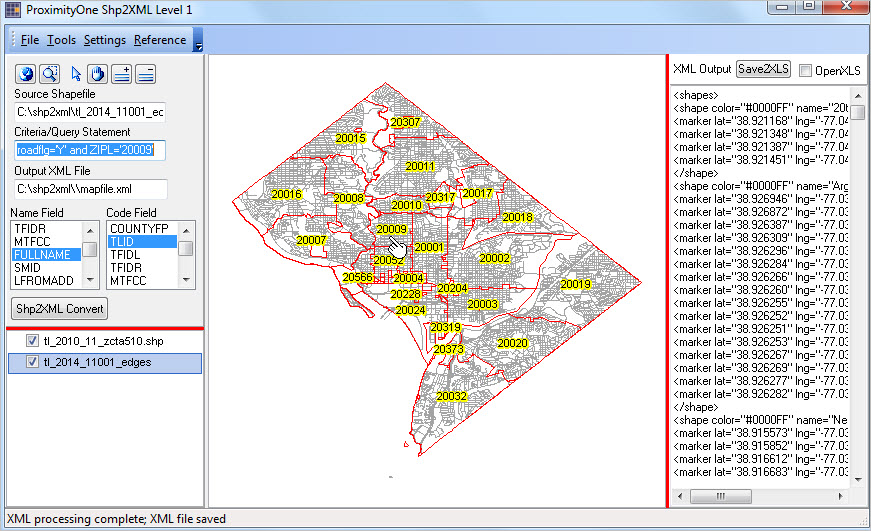

|
|
TIGER/Line Main Digital Map Database APIGeocoder Situation & Outlook CV XE GIS Tools Data Resources Guide - projections to 2060 Related Sections - Applications Gallery - States - Congressional District - School Districts - Counties - Cities/Places - Tracts/Neighborhoods - Block Groups - Census Blocks - Urban Areas Demographic-Economic Estimates-Projections GIS Thematic Mapping Visual Analysis Tools Ranking Tables National Scope Demographic Change 2000-2010 - States - Metros - Congressional District - School Districts - Counties - Cities/Places - Census Tracts |
TIGER/Line 2014 Road Coverage
This section provides a U.S. by county interactive table showing attributes of TIGER/Line 2014 street/road coverage. The TIGER/Line files and related Digital Map Database (DMD) provide U.S. wall-to-wall street/road coverage in the form of line shapefiles. Lines classified as roads are intersection-to-intersection road segments. Line segment fields include name, left- and right-side high and low addresses, and many related attributes. Update. See about the TIGER 2016 released in August 2016. Fort Bend County View 1  Fort Bend County View 2  Shp2XML -- Extracting TIGER Shapefile Geometry • no fee tool to convert shapefile geometry to XML/XLS • create polyline files; display shapefile geometry on Google/Bing maps • see http://proximityone.com/shp2xml.htm  TIGER 2014 TIGER/Line 2014 vintage files were released in August 2014. While many aspects of road coverage remain as described in this section, TIGER/line 2014 includes many updates as well as "new vintage" geography for school districts, state legislative districts, congressional districts and other political/statistical area geography. See TIGER 2014. TIGER Road Coverage & Attribute Availability A limitation of TIGER/Line road coverage is that not all road segment fields are populated with the name and many have no address-related field values. This is the result of many reasons that include quality of underlying data are provided by county/regional source partners, roads that are predominately commercial and less residential and other factors. Why this matters: • match rate can be unacceptably low for use in geocoding • location-based analyses inhibited by lower coverage addresses • absence of names and addresses limits ability for labeling in map views Other limitations include omission of line/road segments when in fact roads do exist and road segments that are geometrically incorrect. Not covered in this section, see visual/map examples in this related section. TIGER 2014 all lines shapefiles (34.6GB) include 70 million segments: • approximately 45 million segments are roads. • among road segments, 31.8 million segments have a populated name field; the remaining 13.2 million have no name assigned. • among road segments, 18.7 million segments have a populated left-side low address field; the remaining 26.3 million segments have no address in the left-side low address field. Data for each of these fields and others are provided for each county in the interactive table below. TIGER 2014 Road/Street Name/Address Coverage -- Interactive Table Click column header to sort; click again to sort other direction. See usage notes below table. See related Ranking Tables Main Page Usage Notes • Use Select Area to select/filter county. - Click ShowAll button first. - Key in any part of name and click Select Area button. - Search will filter for any name with that exact, case sensitive, spelling. - Maricopa is used as an example. • Click ShowAll button between specific queries. Column Headers • County Name • ST -- state postal abbreviation • StCty -- state + county FIPS code • All Lines -- total line segments • Roads -- line segments that are roads • Named -- with some name -- among all road segments • Left-Lo -- left side low address -- with some address -- number of all road segments • Left-Hi -- left side low address -- with some address -- number of all road segments • Right-Lo -- right side low address -- with some address -- number of all road segments • Right-Hi -- right side high address -- with some address -- number of all road segments • Named Roads -- with some name -- % of all road segments • L-Lo% -- left side low address -- with some address -- % of all road segments • L-Hi% -- left side high address -- with some address -- % of all road segments • R-Lo% -- right side low address -- with some address -- % of all road segments • R-Hi% -- right side high address -- with some address -- % of all road segments About TIGER/Line TIGER/Line shapefiles are created from the Census Bureau's TIGER (Topologically Integrated Geographic Encoding and Referencing) database of selected geographic and cartographic information. TIGER is used by the Census Bureau to support the mapping and related geographic activities required by the decennial and economic censuses and statistical survey programs. TIGER/Line shapefiles are available for public use and are typically used to provide the digital map base for GIS (Geographic Information System) and mapping applications. TIGER/Line files are digital, vector-based point, line and polygon shapefiles and related files. TIGER/Line shapefiles do not contain any demographic or other subject matter data though wide-ranging subject matter data can be knit-together with the shapefiles. TIGER/Line files are digital, vector-based point, line and polygon shapefiles and related files. TIGER/Line shapefiles do not contain any demographic or other subject matter data though wide-ranging subject matter data can be knit-together with the shapefiles. ProximityOne User Group Join the ProximityOne User Group to keep up-to-date with new developments relating to geographic-related decision-making information resources. Receive updates and access to tools and resources available only to members. Use this form to join the User Group. Support Using these Resources Learn more about geographic-demographic economic data and related analytical tools. Join us in a Decision-Making Information Web session. There is no fee for these one-hour Web sessions. Each informal session is focused on a specific topic. The open structure also provides for Q&A and discussion of application issues of interest to participants. Additional Information ProximityOne develops geodemographic-economic data and analytical tools and helps organizations knit together and use diverse data in a decision-making and analytical framework. We develop custom demographic/economic estimates and projections, develop geographic and geocoded address files, and assist with impact and geospatial analyses. Wide-ranging organizations use our tools (software, data, methodologies) to analyze their own data integrated with other data. Follow ProximityOne on Twitter at www.twitter.com/proximityone. Contact us (888-364-7656) with questions about data covered in this section or to discuss custom estimates, projections or analyses for your areas of interest. |
|
|